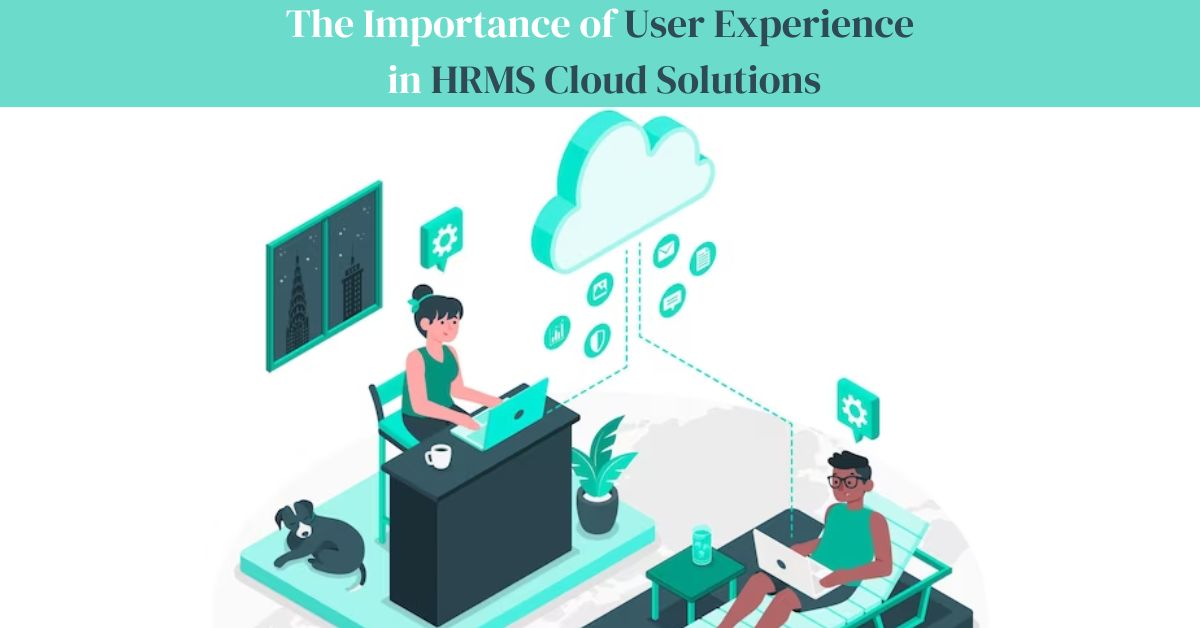The Importance of User Experience in HRMS Cloud Solutions

Introduction:
In today’s digital era, user experience (UX) plays a critical role in the success of software solutions, including HRMS (Human Resource Management System) cloud solutions. As businesses increasingly rely on cloud-based HRMS platforms to streamline their HR processes, the importance of providing a seamless and intuitive user experience cannot be overstated. This article delves into why user experience matters in HRMS cloud solutions and how it impacts both employees and HR professionals.
Understanding User Experience in HRMS Cloud Solutions:
User experience encompasses the overall experience that users have while interacting with a software application, including ease of use, efficiency, accessibility, and satisfaction. In the context of HRMS cloud solutions, user experience extends to both employees who utilize self-service portals for tasks like submitting leave requests and accessing HR information, as well as HR professionals who manage various HR processes through the system, such as recruitment, onboarding, performance management system and payroll.
The Importance of User-Centric Design:
A user-centric design approach is essential for HRMS cloud solutions to ensure that the platform meets the needs and expectations of its users. By prioritizing user needs and preferences, HRMS vendors can create interfaces that are intuitive, visually appealing, and easy to navigate. This, in turn, enhances user adoption and satisfaction, leading to increased productivity and efficiency within the organization.
Enhanced Employee Experience:
For employees, a positive user experience with HRMS cloud solutions can significantly impact their overall employee experience. User-friendly self-service portals empower employees to access HR information, submit requests, and complete tasks quickly and efficiently. Intuitive interfaces and clear navigation paths reduce frustration and encourage employees to engage more with the HRMS platform, leading to higher levels of employee satisfaction and engagement.
Efficiency and Productivity:
From an HR professional’s perspective, a well-designed HRMS cloud solution streamlines workflows, automates repetitive tasks, and provides easy access to relevant information and tools. This enhances HR efficiency and productivity, allowing HR teams to focus on strategic initiatives rather than administrative tasks. Features such as customizable dashboards, advanced search capabilities, and role-based access control further enhance usability and enable HR professionals to perform their jobs more effectively.
Mobile Accessibility:
In today’s mobile-centric world, the ability to access HRMS cloud solutions from anywhere, at any time, is essential. Mobile accessibility allows employees and HR professionals to stay connected and productive, even when they are on the go. Whether it’s checking leave balances, approving time-off requests, or reviewing candidate profiles, mobile-friendly HRMS applications enable users to perform tasks conveniently from their smartphones or tablets, enhancing flexibility and agility in HR operations.Mobile accessibility not only provides convenience but also enhances collaboration and communication among employees and HR professionals. With mobile-friendly HRMS applications, team members can easily communicate with each other, collaborate on projects, and access important documents or updates in real-time, regardless of their location. This fosters a more connected and agile workforce, enabling seamless coordination and decision-making, even when team members are dispersed geographically.
Driving Adoption and Engagement:
A positive user experience is key to driving adoption and engagement with HRMS cloud solutions across the organization. When users find the platform easy to use and navigate, they are more likely to embrace it as part of their daily workflows. This leads to higher levels of engagement with HR processes, increased data accuracy, and ultimately, better business outcomes. Additionally, satisfied users are more likely to recommend the HRMS platform to their colleagues, further promoting adoption and usage within the organization.
Furthermore, fostering a culture of continuous improvement and feedback loops within the organization encourages users to share their insights and suggestions for optimizing the HRMS platform further. By actively incorporating user feedback and iteratively enhancing the platform based on user needs, organizations can ensure long-term adoption and sustained engagement with HR processes.
Conclusion:
In conclusion, user experience is a critical factor in the success of HRMS cloud solutions. By focusing on usability, accessibility, and user-centric design principles, HRMS vendors can create platforms that enhance employee experience, drive efficiency and productivity, and ultimately, deliver value to the organization. As businesses continue to embrace digital transformation in HR, investing in a well-designed HRMS cloud solution with a strong emphasis on user experience will be essential for staying competitive in today’s fast-paced business environment.






